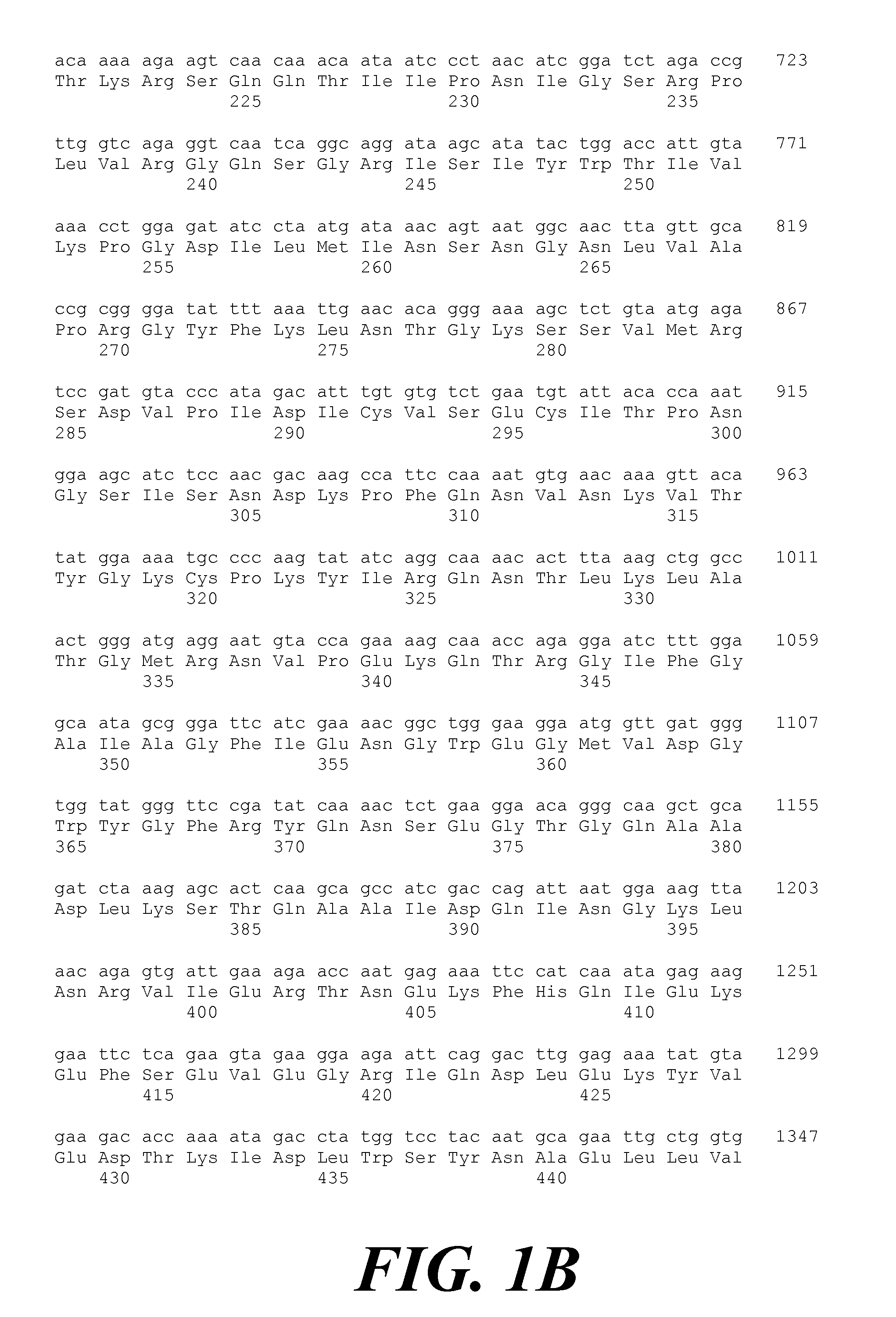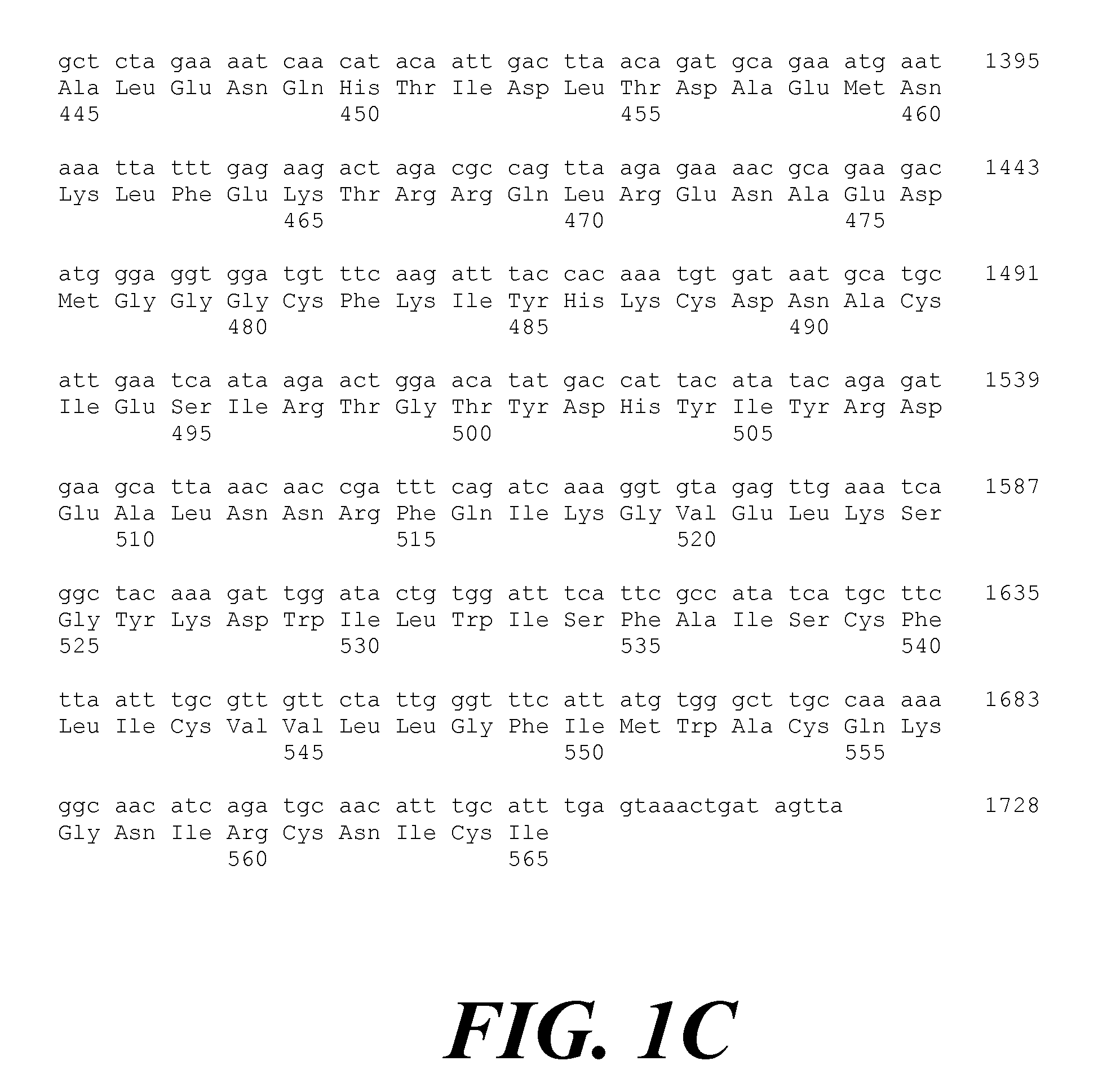Canine influenza virus
a technology of canine influenza virus and canine influenza, which is applied in the field of isolated canine influenza virus, can solve the problems of inability to fully absorb the virus, lack of immunity, and inability to detect the presence of the virus, and achieve the effect of rapid determination and high production level
- Summary
- Abstract
- Description
- Claims
- Application Information
AI Technical Summary
Benefits of technology
Problems solved by technology
Method used
Image
Examples
example 1
Isolation of Canine Influenza Virus A / Canine / NY / 115809 / 05
[0080]Sample that was received at the Animal Health Diagnostic Center was a pharyngeal swab from a 10 year old golden retriever. The extract from the swab was divided into two aliquots. One was part of the sample was tested for influenza virus nucleic acid by the polymerase chain reaction test targeting the matrix gene. The other part of the sample was placed at −70° C. until PCR results were available. Upon learning of a positive test by PCR, the frozen sample was thawed and used to inoculate MDCK cells and embryonated eggs. The MDCK cells were cultured with trypsin in the growth medium to enhance the growth of influenza. After several days in culture, abnormal cell morphology was detected that was not present in the control cultures. After 6 days, the cells were frozen. A thawed extract was used to inoculate new MDCK cells. After 6 days, the cell monolayer was destroyed. The eggs were incubated for 3 days and then the allant...
PUM
| Property | Measurement | Unit |
|---|---|---|
| thick | aaaaa | aaaaa |
| nucleic acid hybridization assay | aaaaa | aaaaa |
| width | aaaaa | aaaaa |
Abstract
Description
Claims
Application Information
 Login to View More
Login to View More - R&D
- Intellectual Property
- Life Sciences
- Materials
- Tech Scout
- Unparalleled Data Quality
- Higher Quality Content
- 60% Fewer Hallucinations
Browse by: Latest US Patents, China's latest patents, Technical Efficacy Thesaurus, Application Domain, Technology Topic, Popular Technical Reports.
© 2025 PatSnap. All rights reserved.Legal|Privacy policy|Modern Slavery Act Transparency Statement|Sitemap|About US| Contact US: help@patsnap.com



